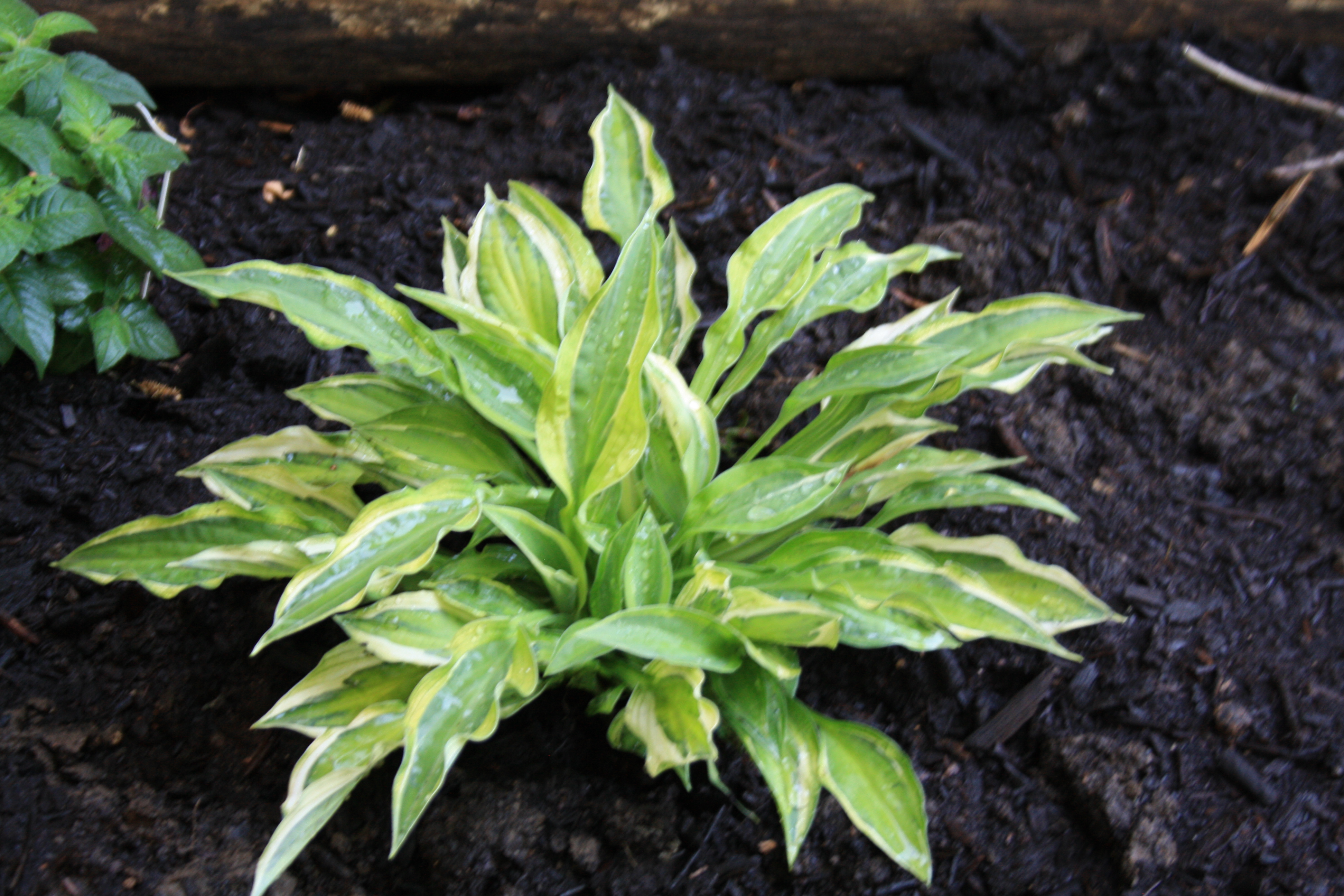 If you’ve got shade, more than likely you’ve also got Hosta. And if you’ve got Hosta you need to know about Hosta virus X, or HVX.
If you’ve got shade, more than likely you’ve also got Hosta. And if you’ve got Hosta you need to know about Hosta virus X, or HVX.
What is Hosta Virus X?
HVX is a virus and infected Hosta eventually develop streaked and or mottled leaves. HVX was first identified in 1996 and now affects Hosta globally. It’s believed that initially Hosta aficionados contributed to the spread of the disease, thinking they had a new and interesting plant. Many ‘new’ cultivars were in fact infected plants showing the effects of the virus. The virus will not kill the Hosta, but there is no cure.
Signs of Hosta Virus X
It is important to remember that a plant can be infected with the disease for many years before showing any symptoms, but when they appear symptoms present in three distinctive ways.
Inkbleed
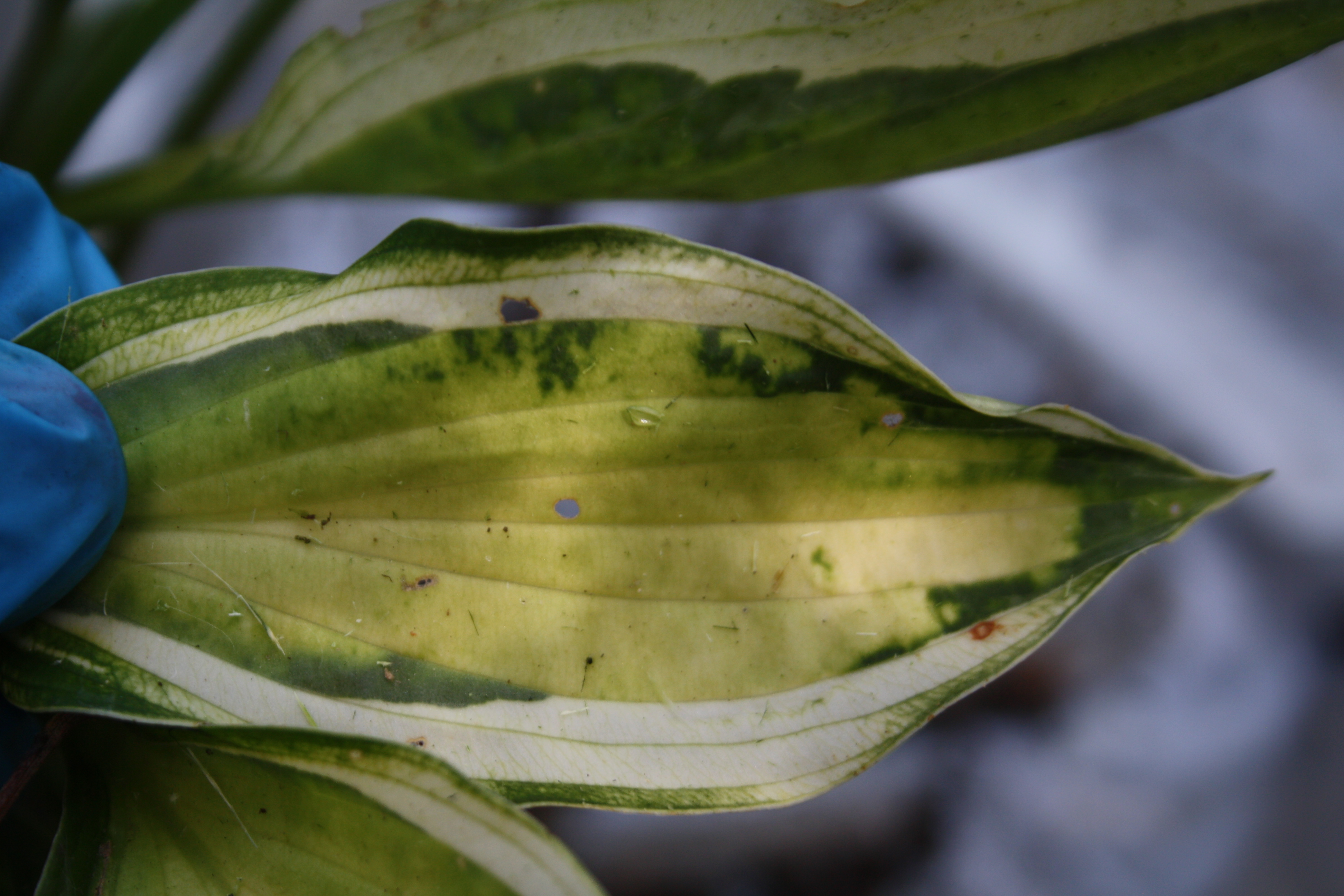
This is not the best photo to show inkbleed, but what you will see is a leaf that appears to have dark variegation along the veins of the leaf. While some cultivars do have streaked leaves on healthy plants, leaves with inkbleed look different. For more and better images please click here.
Tissue Collapse
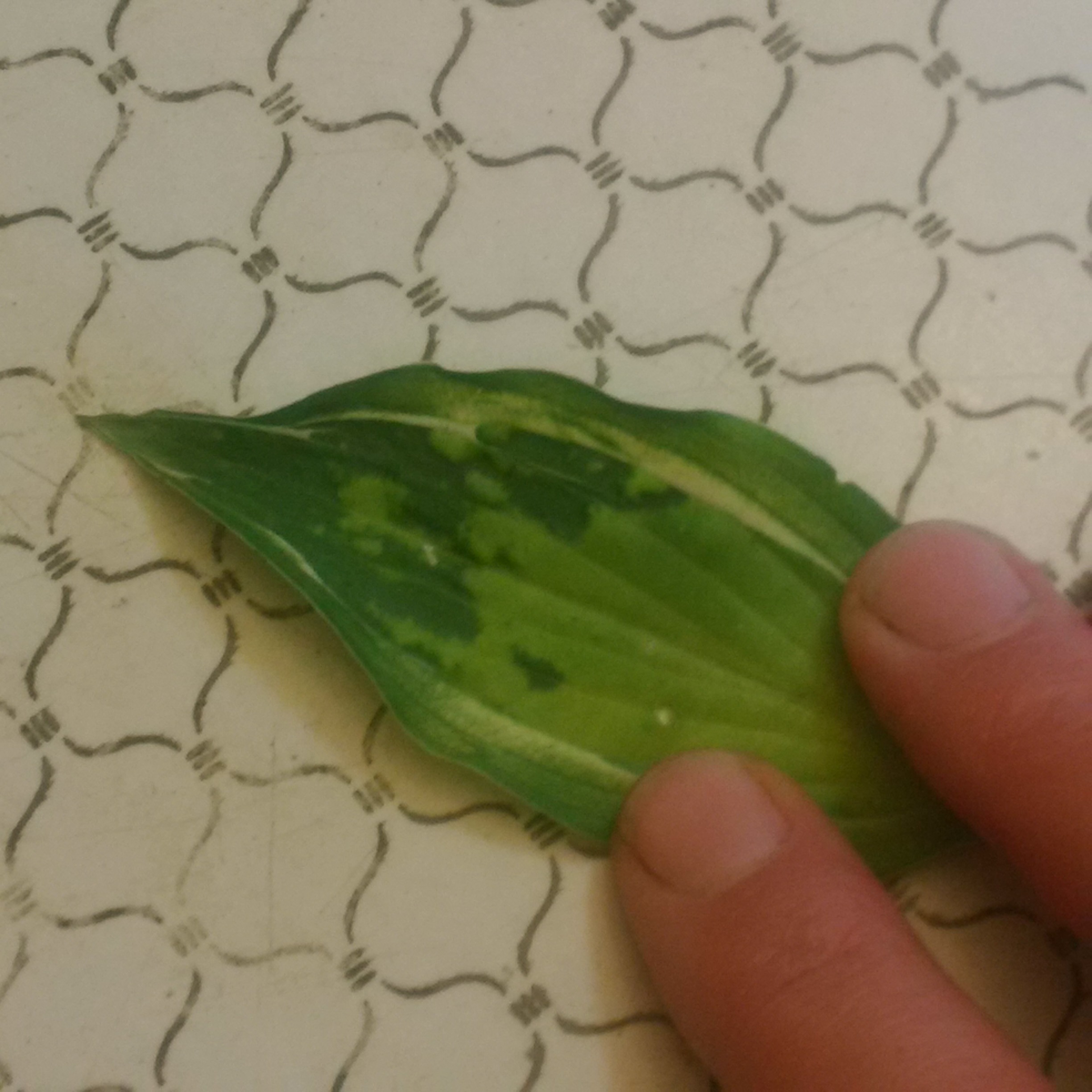
It’s difficult to see in photos, but on this Hanky Panky leaf, the dark spots are dimpled. Sometimes it will give leaves a crinkly appearance. Again this is a characteristic in some cultivars, but the leaves affected by HVX will look different.
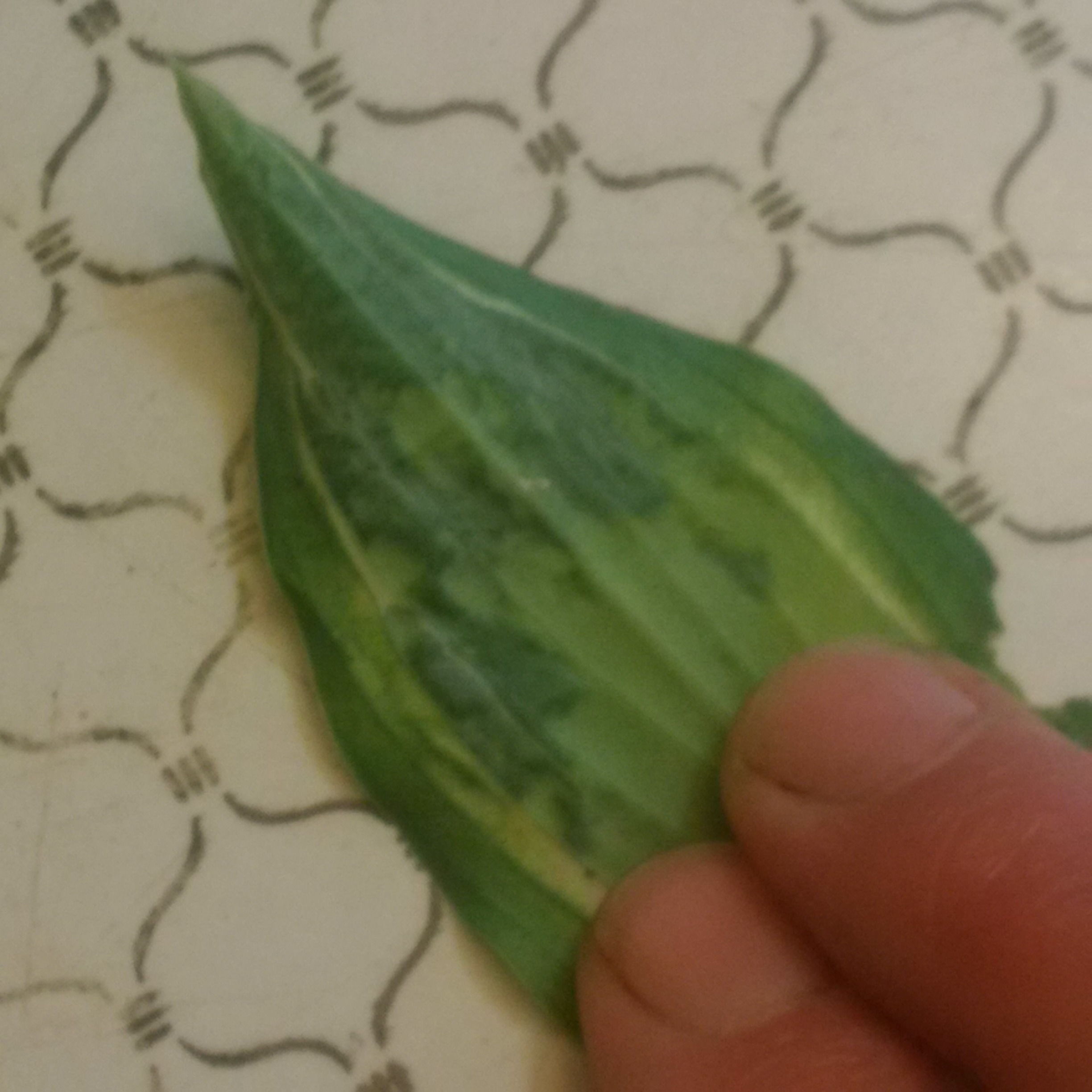
Here is the back side of the same leaf. While it may not show well in pictures, it is very distinctive when seen in person. The leaf tissue collapses and thinner than the rest of the leaf.
Leaf Mottling
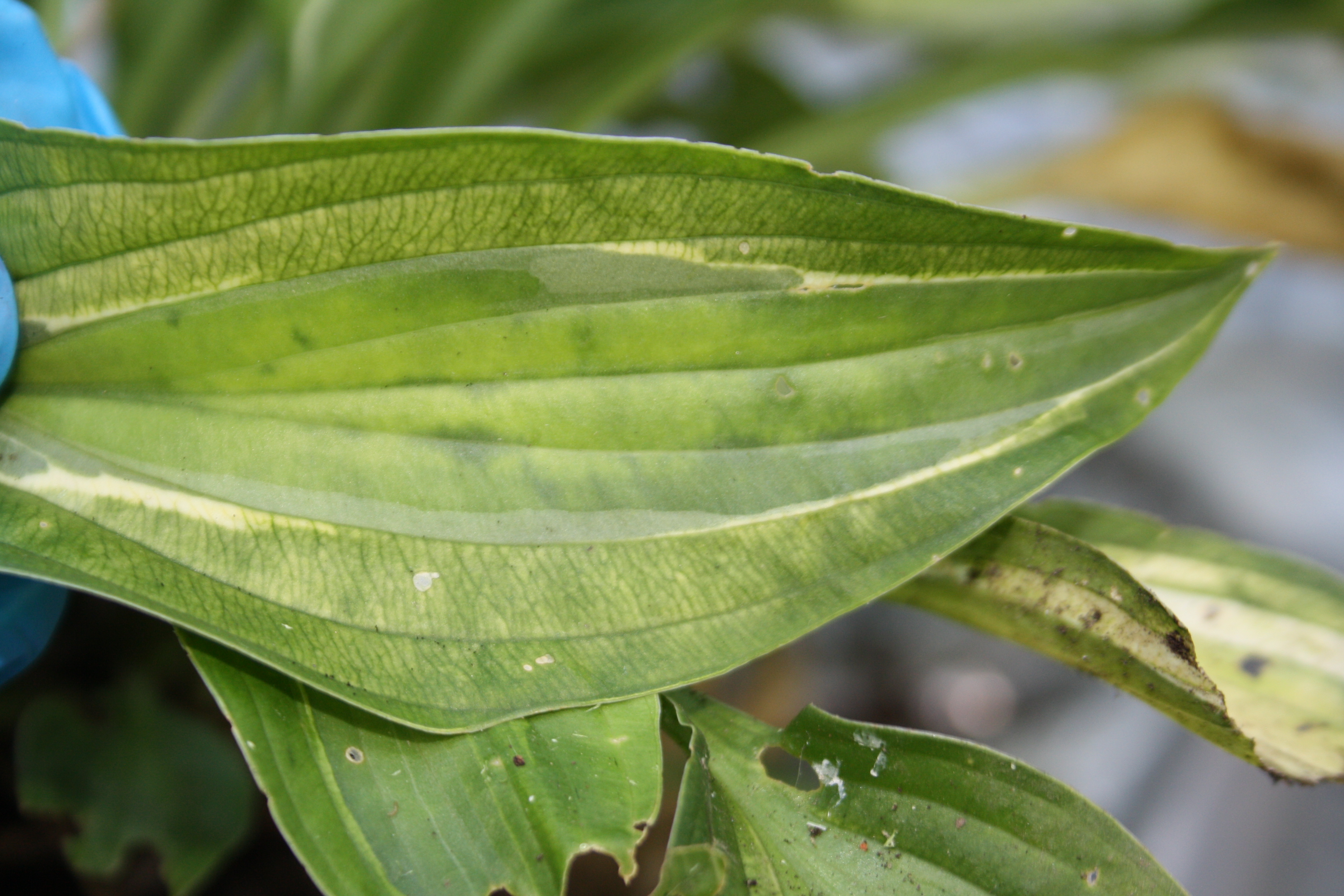
Treating the disease
There is no cure for Hosta Virus X. Let me repeat myself here – there is no cure for HVX. Just last night I saw a gentleman on a Hosta Facebook group insisting that it could be cured with a home-made spray of tea tree oil and Russian comfrey or some such balderdash.
If you believe that, I’ve got some Rainbow Tomato seeds to sell you – no really they look just like gumballs.
If you find signs of HVX on one of your Hosta, it’s important to remove the infected plant. While HVX is only spread through the sap of the plant and cannot infect anything other than Hosta, it is possible to spread the disease within your own yard – or to the garden of a friend. There are plenty of opportunities during regular gardening activities to transfer sap from an infected plant to healthy plants. Activities such as transplanting, edge trimming the lawn, dead-heading flowers, etc. can all potentially transfer sap from one Hosta to another.
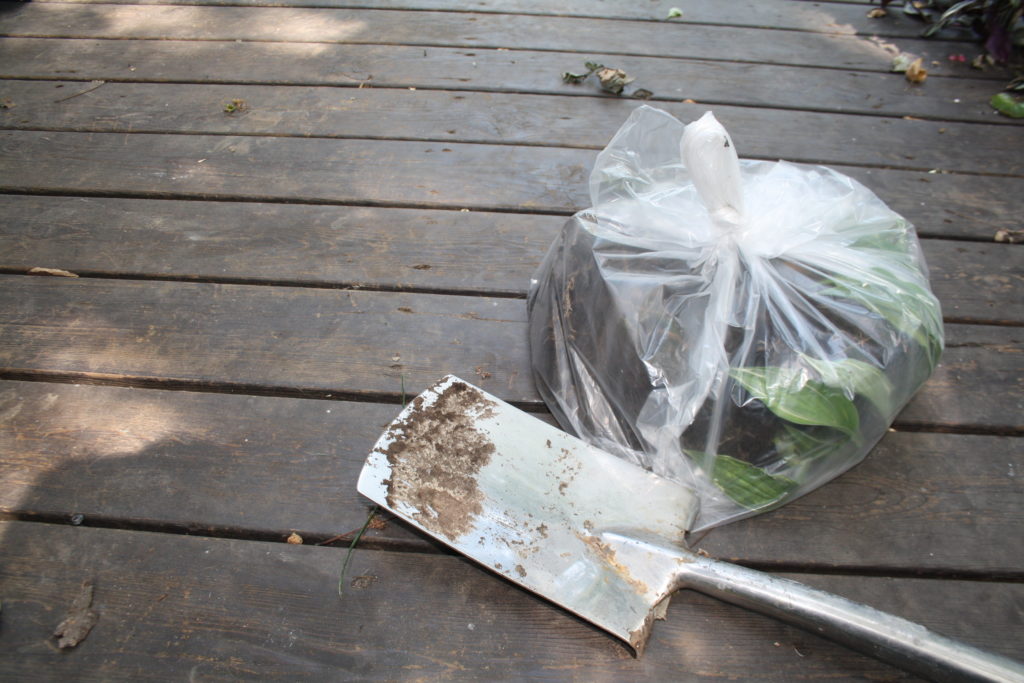
Dispose of the infected hosta in your regular household trash – NOT the composter or a community composting program.
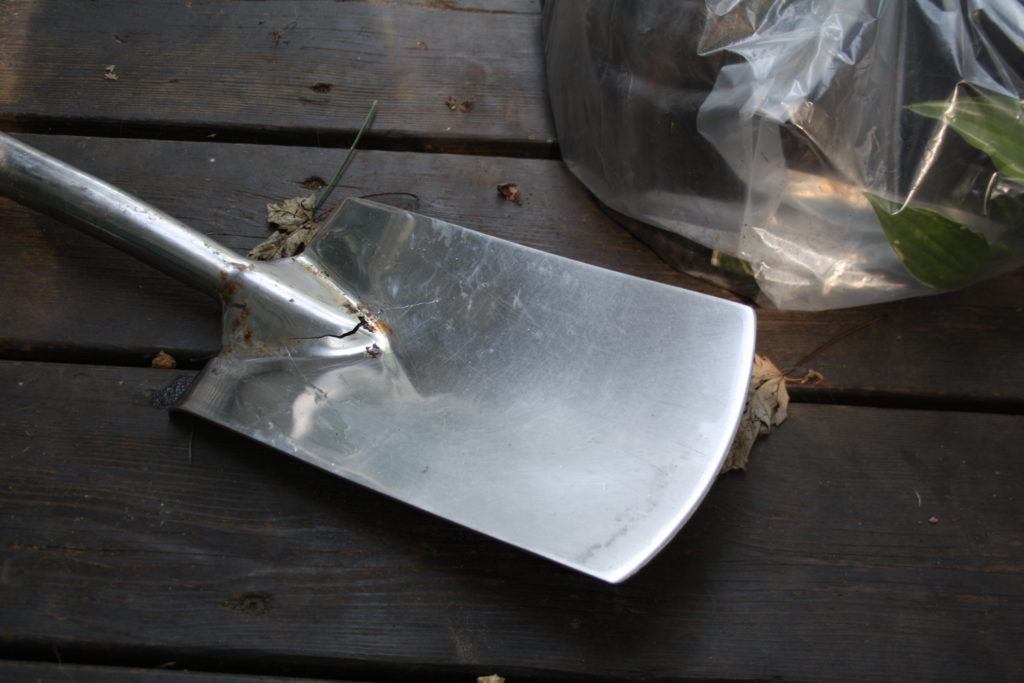
Once you’ve disposed of the diseased hosta, you must scrub and disinfect any garden tools that have come into contact with the plant. It’s not enough to just disinfect – thoroughly scrub the tool first and then dip it in a bleach solution.
Some other considerations
Once you’ve removed the plant, do not plant Hosta there again. It used to be assumed that as long as all root material was gone it was safe to replant in that location. This is no longer the thinking. You can plant Heuchera or Hellebore or any other shade-loving plant in that location, HVX will not affect them, but no Hosta.
Because the virus is found more often in certain varieties, some people might think only those varieties can have it. This is simply not true. HVX can infect any variety of Hosta.
Another issue is that some gardeners think the infected plant looks unique or attractive and will keep it in their garden. If you see a plant in a friends garden that looks suspicious don’t take any plants from them – even if the plant they are sharing looks healthy.
If you’re truly a Hosta lover, buy your plants at a place that specializes in Hosta. They’ll know about the disease and take steps to ensure their plants are free of the disease.


I believe I may have a couple Patriot hosta that are infected with HVX. I’ve read about the proper procedure to dispose of them. Is there any current info regarding how soon you can plant another hosta in that same area again? Because this is strictly a hosta garden, I am hoping I can eventually replace it with another hosta. Thanks!
I believe current thinking is still that you just can’t. If it absolutely has to be a hosta in that location why not add a potted one? This is a good link to some older research on hvx – http://www.americanhostasociety.org/Publications/41/HVXarticle.htm
Guess I might need to try a potted hosta. Have you had luck keeping them in pots in Ontario? I am in Minnesota and have heard that you sometimes lose them due to harsh winters.
Our biggest problem is freeze thaw cycles where I’m at but I know some more north keep them. Maybe overwintered in a more sheltered location?
I’m in central MN (I don’t see a date on this post so you may have tried in ground potting already) and have kept potted hostas in the ground for years. I just make sure to plant the pot so that the soil in the pot is the same level as the soil around the outside of the pot.
Your comments and photos are the best I have seen to date on this subject. Thanks so much!
Hopefully those are the only photos I get an opportunity to take! Sadly that poor little Hanky Panky was in my own garden. As I come across additional resources on this disease I’ll add links to them on the bottom of my post. Hosta have become highly collectible so it’s important to get the word out.